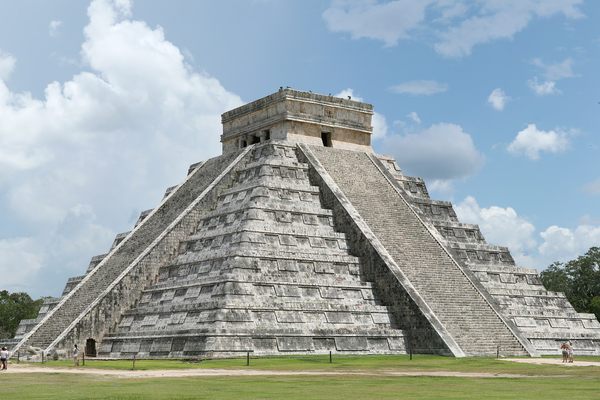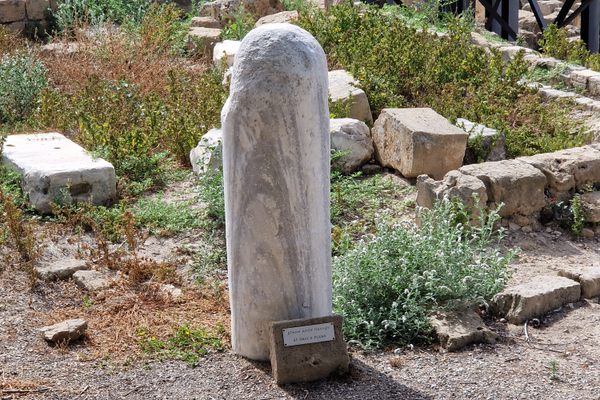AO Edited
"Angels" of Ek' Balam
These winged Maya figures are the subject of speculation and conspiracies.
Ek’ Balam, the archaeological site whose name means “Black Jaguar” and comes from a legendary, unverified founder of the same name, has many distinctive characteristics that make it notable. Its taller pyramidal structure which, as is the case with many similar structures in Mexico, is commonly known as the Acropolis nowadays, can still be climbed freely (unlike El Castillo at Chichén Itzá, for example). At a maximum height of 31 meters, it offers an impressive sight over the rest of the ruins of a city once estimated to have been home to between 12 and 18,000 people. The tomb found within, belonging to the ruler Ukit Kan Lek Tok, is known for the wealth of the offerings within.
While these may attract visitors interested in archaeology, the site also appeals to those interested in the supernatural due to two figures featuring in the exceptionally well-preserved sculpted stucco facade of one of the entrances to the Acropolis. The figures depict two men in ceremonial attire, each with a large pair of feathered wings at their back. This has earned them the moniker of “angels” of Ek’ Balam.
The figures definitely pre-date European contact, as Ek’ Balam had its apogee between the seventh and ninth centuries, which has lead to speculation ranging from possible contact before Christopher Columbus, extraterrestrial or Atlantean influence, a type of common consciousness, among others. The commonly-known depiction of Judeo-Christian angels, as humanoids with a pair of feathered wings, cannot be found in scripture and in fact, may have originated in Turkey in the fourth century, before its popularization in European Christian art.
While this does not discard the possibility of pre-Columbian European contact (other than Leif Erikson in Newfoundland, there is no commonly-accepted historical precedent for this, however), the timing and evidence of angelic depictions having taken creative liberties from the Abrahamic texts, it is very unlikely that the winged figures of Ek’ Balam bear any relation to what is known as angels.
Regardless, the figures, which probably use macaw wings to represent entities of Maya mythology, can still be appreciated for their artistry and the fortunate circumstances that have lead to their excellent current condition.
Know Before You Go
The site can be visited daily (except holidays) from 8 am to 5 pm, although last admissions are at 4 pm. The National Anthropology and History Institute charges a flat rate of MXN $75 per person for entrance to the site.
The State Government of Yucatán adds an additional fee on top of this, which varies from over MXN $300 for foreign visitors to around $80 for Mexican citizens and residents with ID. The additional charge for Mexicans is waived on Sundays.
Organized tours are also a good option as they can be booked with departure from several touristic cities such as Cancún, Playa del Carmen, Mérida, and the nearby Valladolid.



















Follow us on Twitter to get the latest on the world's hidden wonders.
Like us on Facebook to get the latest on the world's hidden wonders.
Follow us on Twitter Like us on Facebook